Table of Contents
1. Introduction
The global kitchenware industry is entering a transformative era, driven by evolving consumer preferences, sustainability goals, and lifestyle upgrades. Among the diverse categories of kitchen tools and utensils, wooden kitchenware accessories have gained a distinctive position. Once considered traditional and local, these products are now increasingly sought after by global buyers for their eco-friendly appeal, health safety, and premium aesthetic value.
In B2B markets—particularly hospitality, retail, and e-commerce—wooden accessories are not only functional but also represent a strategic branding choice. Restaurants and hotels, for instance, invest in wooden serving trays, salad bowls, or cutting boards to highlight their commitment to sustainability and authenticity. Similarly, global retailers and importers view wooden kitchenware as an opportunity to capture the rising demand for green alternatives to plastic and stainless steel.
This article explores the wooden kitchenware accessories market from 2024 to 2034, focusing on its market size, growth drivers, challenges, and future opportunities. By integrating insights from leading market research, we aim to provide businesses with a clear roadmap to leverage this expanding sector.
2. Global Kitchenware Market Overview
The global kitchenware market has demonstrated strong resilience over the past decade, with consumer spending on household and foodservice products steadily increasing. According to Grand View Research (2023), the kitchenware market size was valued at USD 56.8 billion in 2022 and is projected to expand at a CAGR of 4.5% from 2023 to 2030. Within this landscape, wood-based products—ranging from utensils to storage solutions—account for a rapidly growing share.


Several key factors underline this shift:
- Eco-conscious consumption: Reports from Allied Market Research (2022) indicate that over 65% of consumers in North America and Europe prefer sustainable kitchen products, with wood ranking among the most desirable materials.
- Functional and aesthetic duality: Unlike plastic or steel, wooden products offer a natural look and tactile experience that resonates with premium and minimalist lifestyle trends.
- Regulatory momentum: Many countries, particularly in the EU, are tightening restrictions on single-use plastics, indirectly encouraging the adoption of sustainable wooden accessories.
The transition is also evident in the hospitality industry, where hotels and restaurants are moving toward durable, customizable, and ethically sourced kitchenware. For B2B buyers, this creates an opportunity to partner with certified manufacturers—especially those holding FSC, BSCI, or Prop 65 certifications—to ensure compliance with international sustainability standards.
3. Market Size & Growth Potential of Wooden Kitchenware Accessories
The wooden kitchenware accessories market is experiencing steady growth as sustainability transitions from a consumer preference to a regulatory and corporate mandate. While precise segmentation data for wooden products is often consolidated under the broader kitchenware category, industry analysts provide strong indicators of its expansion.


According to Allied Market Research (2023), the global kitchenware market was valued at approximately USD 56.8 billion in 2022 and is projected to reach USD 77.4 billion by 2032, growing at a CAGR of 3.2%. Within this landscape, wooden kitchenware—although a smaller segment—has shown higher-than-average growth, estimated at 5–6% CAGR due to surging demand for eco-friendly and non-toxic alternatives. Grand View Research
Regional Breakdown
- North America: Driven by consumer health awareness and restrictions on plastics, the U.S. is one of the leading markets for premium wooden utensils and accessories.
- Europe: Sustainability regulations, such as the EU’s Single-Use Plastics Directive, are fueling the adoption of reusable and renewable materials, giving wooden products a competitive edge.
- Asia-Pacific: Expected to register the fastest growth, with countries like Vietnam, India, and China not only serving as key manufacturing hubs but also experiencing rising domestic demand from middle-class households.
- Middle East & Africa: Smaller but emerging market, led by luxury hospitality projects and tourism-driven demand for premium dining experiences.
Key Growth Drivers
- Healthy Lifestyle Trends – Consumers are increasingly drawn to wooden utensils as they are free from harmful chemicals and align with organic living.
- Eco-Friendly Movement – Wooden products, particularly those with FSC certification, are favored as sustainable alternatives to plastic.
- Aesthetic Appeal – Wooden kitchenware complements minimalist and luxury kitchen designs, enhancing both functional and decorative purposes.
Comparative Analysis: Wooden vs. Plastic vs. Stainless Steel
- Wooden: Sustainable, biodegradable, aesthetically premium, safe for cooking; moderate durability.
- Plastic: Low cost, widely available, but increasingly restricted due to environmental impact.
- Stainless Steel: Durable and hygienic, but lacks the eco-friendly and aesthetic value driving modern consumer preferences.
This comparative shift highlights how wooden kitchenware accessories are uniquely positioned to capture market share in the premium and sustainable product categories. For B2B buyers, this means higher margins and long-term alignment with sustainability-conscious clients such as hotels, restaurants, and retail chains.
4. Key Drivers Behind Market Growth
The wooden kitchenware accessories market is shaped by several strong growth drivers that position it as a resilient and high-potential segment within the global kitchenware industry.
4.1 Sustainability & Eco-Conscious Consumers
Sustainability has evolved from a marketing trend into a fundamental purchasing driver. Consumers worldwide are increasingly rejecting plastic-based kitchenware in favor of eco-friendly alternatives. A survey by McKinsey & Co. (2022) found that more than 70% of consumers in Europe and North America are willing to pay a premium for sustainable household products. Wooden kitchenware accessories—biodegradable, renewable, and aligned with circular economy principles—fit perfectly into this demand.


For B2B buyers, particularly large retailers and hospitality groups, sourcing from FSC-certified wooden kitchenware suppliers offers both compliance and brand value. Companies that integrate sustainability into their procurement strategy are better positioned to attract eco-conscious consumers and meet ESG (Environmental, Social, Governance) targets.
4.2 Health & Safety Factors
Beyond sustainability, food safety and consumer health remain decisive factors. Unlike certain plastics, wooden utensils do not leach harmful chemicals such as BPA or phthalates when exposed to heat. Research published in the Journal of Food Protection (2021) confirmed that properly treated hardwood cutting boards and utensils exhibit low bacterial retention, making them safe for daily use in both households and commercial kitchens.
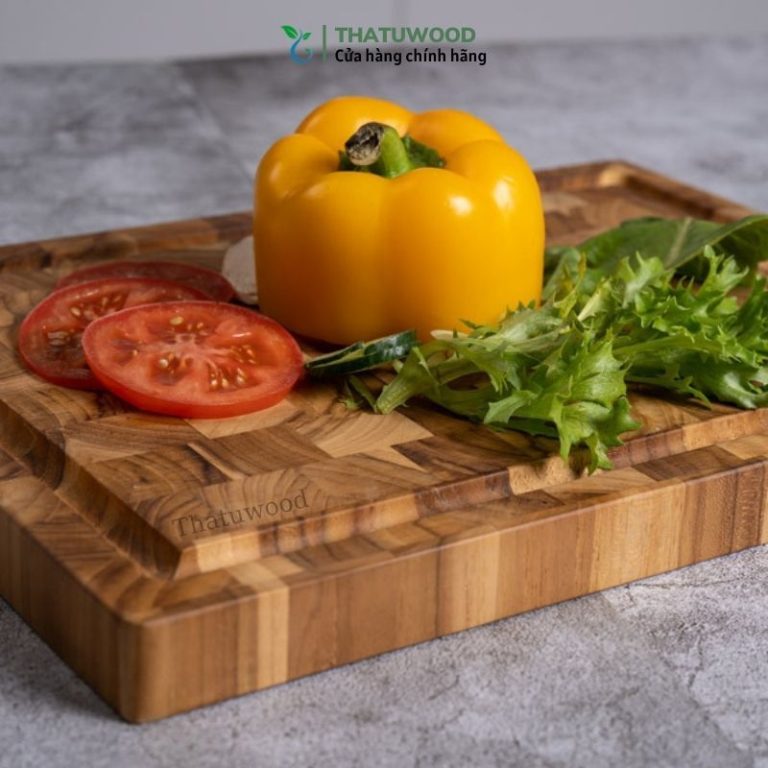

This safety assurance is especially critical for the hospitality and foodservice industries, where compliance with food safety standards is non-negotiable. For global importers and distributors, wooden accessories provide a reliable, non-toxic alternative that enhances their product portfolios.
4.3 Aesthetic & Premium Lifestyle Trend
According to Grand View Research (2023), the global kitchenware market is projected to grow at ≈ 6.9% CAGR from 2024 to 2030. While data specific to premium, wood-based kitchenware accessories are less readily available, several regional reports (e.g. the U.S. wood tableware & kitchenware market) indicate steady growth, suggesting wood products are playing a significant role in that expansion.
(Then cite Grand View Research and IndexBox)
For businesses, this translates into higher margins. Restaurants, boutique hotels, and luxury retailers often invest in custom-branded wooden kitchenware to enhance customer experience and differentiate their offerings. This has created new opportunities for B2B manufacturers to provide personalized, logo-engraved solutions tailored to brand identity.
4.4 Regulatory & Policy Support
Government policies are reinforcing the transition toward sustainable materials. The European Union’s Single-Use Plastics Directive (2019) and similar regulations in North America and parts of Asia are accelerating demand for biodegradable and reusable products. Wooden kitchenware, when sourced from responsibly managed forests, not only complies with these regulations but also strengthens global supply chains against future restrictions.


Furthermore, certifications such as FSC (Forest Stewardship Council), BSCI (Business Social Compliance Initiative), and Prop 65 compliance in the U.S. have become essential requirements for international buyers. Manufacturers that can demonstrate compliance with these standards are more competitive in B2B markets, particularly in the EU and North America.
5. Challenges & Limitations
While the wooden kitchenware accessories market is growing, businesses must carefully navigate several challenges that affect production, pricing, and international trade. Addressing these limitations strategically can turn potential risks into opportunities.
| Challenge | Market Impact | Business Opportunity |
|---|---|---|
| Sustainable Raw Material Supply & FSC Requirements | Limited access to certified wood can raise costs and restrict market entry, especially in the EU and North America, where certification is mandatory. | Invest in partnerships with FSC-certified forestry suppliers and highlight traceability in marketing to gain buyer trust. |
| Price Competition from Plastic & Stainless Steel | Wooden products are generally priced higher, making it difficult to compete in cost-driven markets. | Position wooden accessories as premium, eco-friendly, and safe alternatives, targeting hospitality, retail, and luxury segments where buyers accept higher prices. |
| Logistics & Export Barriers (quotas, tariffs, trade regulations) | Exporters may face additional taxes, shipping delays, or quota restrictions on wood products. | Build regional distribution hubs and diversify target markets to reduce reliance on single trade routes. Compliance with trade agreements ensures smoother entry. |
| Durability & Maintenance Perception | Some buyers perceive wood as less durable or harder to maintain than steel. | Provide product education (e.g., care instructions, protective coatings) and innovate with treated hardwood for an extended lifespan. |
| Market Awareness & Branding | In many markets, buyers still view wooden utensils as traditional rather than premium. | Invest in branding, customization, and storytelling (sustainability, artisanal value) to reposition wooden accessories as luxury and modern. |
6. Market Segmentation of Wooden Kitchenware Accessories
The wooden kitchenware accessories market is highly diverse, covering multiple product categories, buyer segments, and geographic regions. Understanding these segments helps businesses identify the most profitable niches and align production with demand.
6.1 Segmentation by Product Type
Wooden kitchenware accessories encompass a wide range of tools and serving products.
- Cutting Boards – A leading product in terms of volume and value; widely used in both households and commercial kitchens.
- Utensils (spoons, spatulas, ladles, tongs) – Everyday cooking essentials, with rising demand in eco-conscious households.
- Serving Bowls & Trays – Premium segment, particularly in hospitality and fine dining.
- Storage Containers & Jars – Gaining traction as plastic alternatives.
- Custom-Branded Kitchenware – High-margin B2B niche, tailored for restaurants, cafes, and corporate gifting.
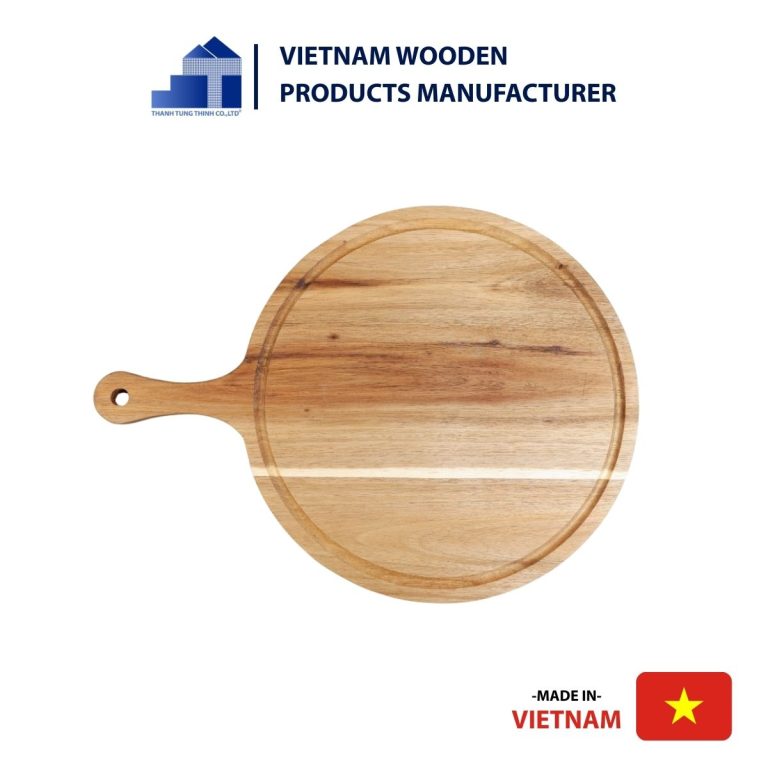

6.2 Segmentation by Customer Type
- B2C (Households) – Driven by sustainability and lifestyle preferences. Online retail platforms (Amazon, Etsy) dominate this channel.
- B2B (Hotels, Restaurants, Retail Chains, Wholesalers) – Focused on bulk orders, consistent supply, and compliance with certifications. This segment has higher long-term potential and stronger margins.
6.3 Segmentation by Geography
- North America (U.S. & Canada) – High demand for premium, certified wooden accessories; strong growth via online retail and hospitality.
- Europe – Sustainability-driven market; strict compliance (FSC, REACH, Prop 65) is a prerequisite for suppliers.
- Asia-Pacific – Fastest-growing region due to expanding middle class and manufacturing hubs (Vietnam, India, China).
- Middle East & Africa – Emerging luxury segment, particularly for hotels, resorts, and premium dining.
Market Segmentation Overview Table
| Segment | Key Characteristics | Growth Potential |
|---|---|---|
| By Product Type | Cutting boards, utensils, serving bowls, trays, storage, and custom-branded items | Cutting boards & utensils lead in volume; custom-branded items lead in margins |
| By Customer Type | B2C households vs. B2B wholesale (hospitality, retailers, distributors) | B2B shows stronger repeat orders and scalability |
| By Geography | North America, Europe, Asia-Pacific, Middle East & Africa | Cutting boards, utensils, serving bowls, trays, storage, and custom-branded items |
7. Competitive Landscape of Wooden Kitchenware Accessories Market
The wooden kitchenware accessories market is highly competitive, with both traditional artisans and large-scale manufacturers contributing to global supply. Competition varies by geography, product type, and target customer segments.
7.1 Key Producing Countries
- China – Largest global exporter, benefiting from large-scale manufacturing and competitive pricing. However, concerns about sustainability and product quality remain a challenge in premium markets.
- Vietnam – Emerging as a strong alternative supplier, with a reputation for sustainable sourcing, skilled craftsmanship, and compliance with FSC, BSCI, and Prop 65 standards. Vietnam’s competitive labor costs and established export infrastructure make it highly attractive for B2B buyers.
- India – Known for artisanal wooden products, especially in utensils and serving bowls. Strong domestic demand plus export opportunities in Europe and the Middle East.
- Eastern Europe (Poland, Romania, Ukraine) – Small but growing players, focusing on premium handmade kitchenware with sustainable wood sourcing.


7.2 Competitive Factors in the Market
- Product Quality & Design Innovation – Buyers demand durability, food safety compliance, and appealing aesthetics. Custom designs (logo engraving, unique shapes) add a competitive advantage.
- Certifications & Compliance – Markets like the EU and U.S. require FSC certification, Prop 65 compliance, and safe finishing materials (non-toxic oils, food-safe coatings). Suppliers with documented compliance are more competitive.
- Pricing Strategy – Low-cost countries (China, India) dominate the mass-market, while Vietnam and Eastern Europe are positioning in the mid-to-premium segment.
- Supply Chain Reliability – B2B buyers prioritize manufacturers with strong logistics, consistent lead times, and the ability to handle large orders.
- Sustainability & Branding – Eco-conscious customers prefer suppliers with proven sustainable sourcing, making this a strong differentiator.
7.3 Opportunities for Vietnamese Manufacturers
Vietnam holds a strategic position in the global wooden kitchenware accessories market:
- Competitive Advantage – Lower production costs compared to Europe, but higher quality perception than China.
- Eco-Certifications – Many Vietnamese suppliers are FSC-certified, ensuring wood is responsibly sourced.
- Skilled Labor – Traditional woodworking expertise enables both mass production and fine handcrafted finishing.
- Rising Global Demand – Importers, especially in Europe and North America, are actively shifting from China to Vietnam due to supply chain diversification.
7.4 Case Study: Thanh Tung Thinh Co., Ltd.
Thanh Tung Thinh Co., Ltd. is a Vietnam-based manufacturer specializing in wooden kitchenware for global B2B markets. With decades of woodworking expertise, the company combines traditional craftsmanship with modern production standards, positioning itself as a trusted sourcing partner for importers, wholesalers, and retailers worldwide.
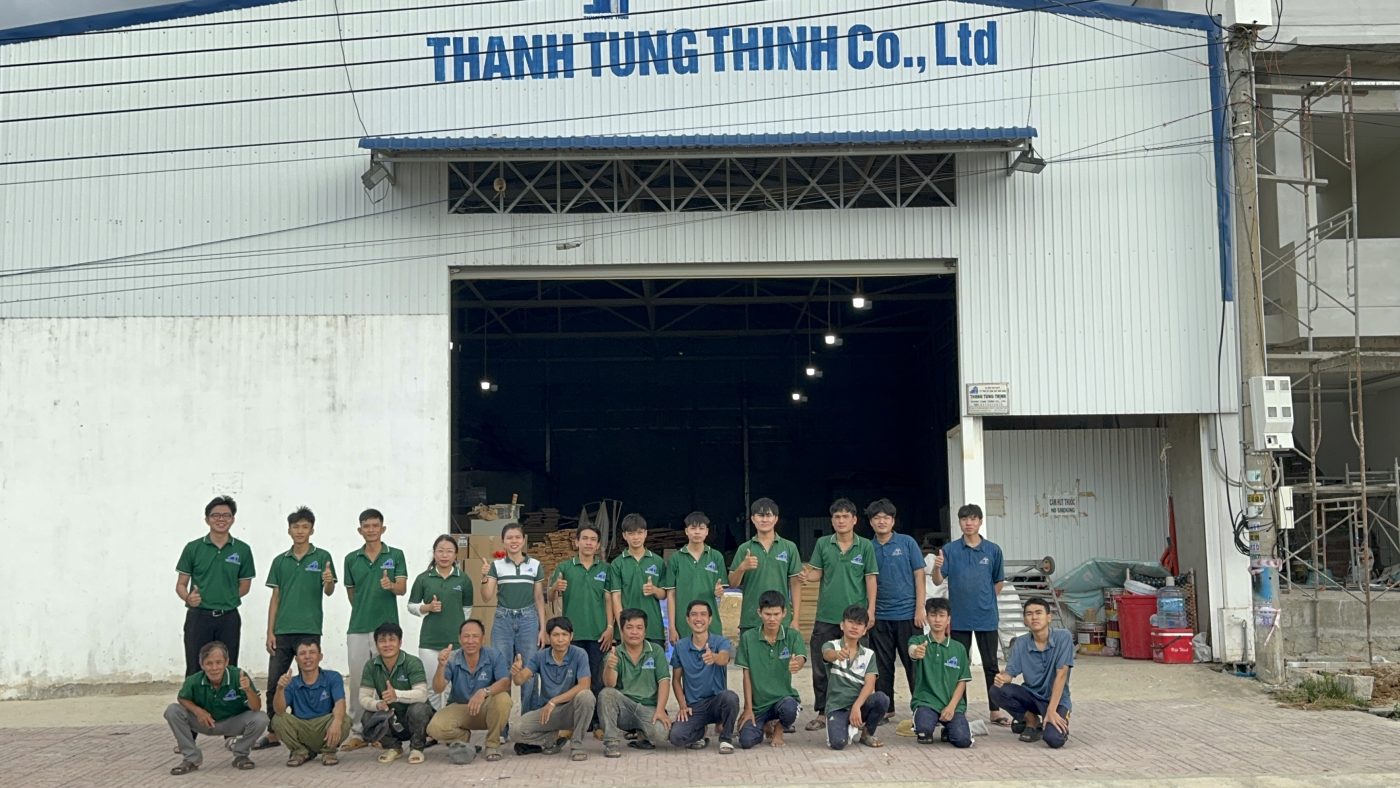

By securing internationally recognized certifications such as FSC® (Forest Stewardship Council), BSCI (Business Social Compliance Initiative), and compliance with California Proposition 65, Thanh Tung Thinh ensures that all wooden kitchenware products meet stringent environmental and safety requirements. This commitment to sustainability and ethical sourcing has enabled the company to access premium markets in North America, Europe, and Asia-Pacific.
Over the past three years, Thanh Tung Thinh has achieved an annual export growth rate exceeding 40%, driven by strong demand for acacia cutting boards, serving trays, and wooden utensils. The company’s ability to customize designs—such as engraved branding, retail-ready packaging, and eco-friendly finishes—provides B2B clients with value-added differentiation in competitive retail channels.
With reliable supply chain management and a growing reputation for quality, Thanh Tung Thinh is not only contributing to Vietnam’s emergence as a sustainable sourcing hub but also shaping the global wooden kitchenware accessories market.
Read more: “Bulk Wooden Kitchen Accessories Supplier – Partner with a Factory in Vietnam”
8. Opportunities for Businesses (2024–2034)
The next decade presents significant growth opportunities in the wooden kitchenware accessories market, especially for businesses that can adapt to changing consumer preferences and sustainability standards.
8.1 Shift from Plastic to Wood in Global Markets
Across major economies, consumer demand is rapidly moving away from single-use plastics and toward eco-friendly materials like wood, bamboo, and acacia. According to the United Nations Environment Programme (2023), over 170 countries have pledged to reduce plastic consumption by 2030, accelerating demand for sustainable kitchenware alternatives.
For B2B buyers—whether in retail chains, hospitality groups, or e-commerce platforms—this shift represents a long-term opportunity to position wooden kitchenware as a premium, eco-conscious solution. Products such as cutting boards, utensils, and storage boxes are increasingly viewed not only as household essentials but also as brand-building tools for companies that want to highlight their green credentials.
8.2 Benefits of Partnering with Certified Manufacturers
Collaboration with suppliers that hold international certifications is becoming a crucial requirement for global sourcing. For instance:
- FSC® Certification guarantees that wood comes from responsibly managed forests.
- BSCI Certification ensures ethical working conditions across the supply chain.
- California Prop 65 Compliance confirms that products are free from harmful chemicals, making them safe for end consumers.
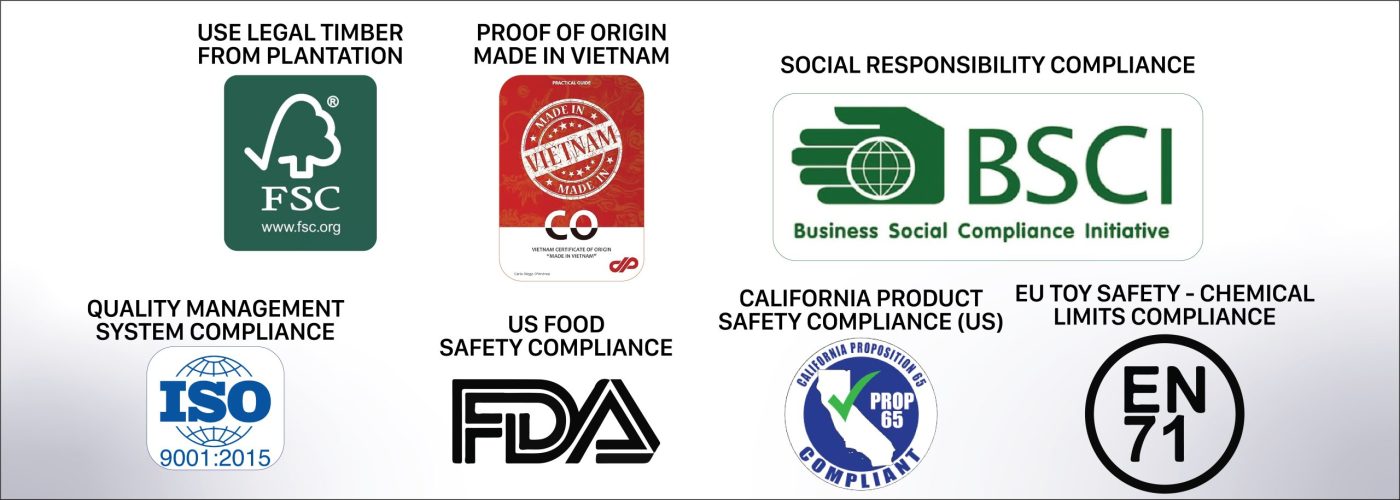

For B2B buyers, sourcing from a manufacturer like Thanh Tung Thinh Co., Ltd.—which complies with these standards—reduces risks in quality control, simplifies import approval processes, and enhances marketability in strict markets such as the EU and U.S.
Example: A European homeware retailer partnered with a certified Vietnamese supplier and successfully launched an eco-friendly product line. The result was a 20% increase in sales within one year, driven by consumer trust in certified sustainability.
8.3 Niche Market Growth: Premium Wooden Kitchenware & Custom Branding
Beyond standard utensils and cutting boards, premium wooden kitchenware is becoming a profitable niche. High-value products—such as engraved serving trays, gift-ready kitchenware sets, and designer wooden storage boxes—are increasingly demanded by hospitality brands, restaurants, and corporate gifting businesses.
For B2B clients, custom branding services (logo engraving, laser etching, tailored packaging) transform kitchenware into a powerful marketing tool. Businesses in the F&B sector—from cafés to fine-dining restaurants—are now leveraging custom-branded wooden accessories as part of their brand identity.
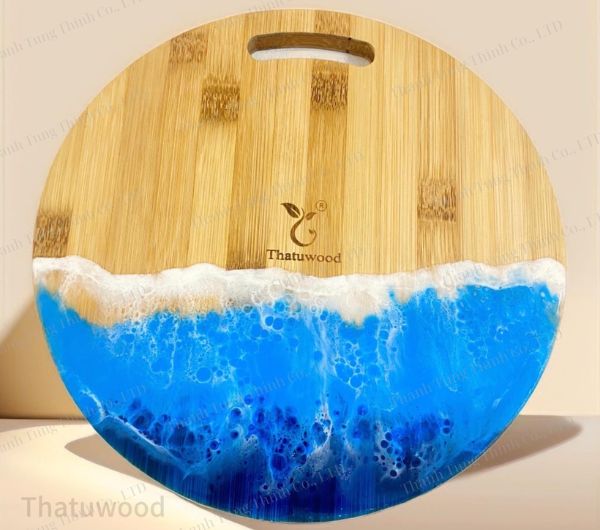

This trend creates significant opportunities for manufacturers like Thanh Tung Thinh to expand service offerings beyond simple production into brand partnership solutions.
8.4 Strategic Outlook 2024–2034
- Global demand for eco-friendly kitchenware is projected to grow steadily, with wooden products capturing an increasing share of the premium segment.
- Companies that align with sustainability certifications will have greater access to lucrative B2B contracts.
- Customization and branding services will emerge as key differentiators, allowing suppliers to command higher margins while helping buyers strengthen their own brand identity.
For businesses looking to capitalize on these opportunities, partnering with certified Vietnamese manufacturers such as Thanh Tung Thinh Co., Ltd. is a strategic step toward long-term growth.
9. Future Outlook & Forecast (2024–2034)
The wooden kitchenware accessories market is entering a transformative decade. While opportunities abound, businesses must also prepare for structural challenges that will shape the next 10 years.
9.1 Market Demand Forecast
According to Grand View Research (2023), the global kitchenware market is expected to expand from USD 65.2 billion in 2023 to over USD 102.7 billion by 2030, registering a CAGR of 6.9%. Within this growth, the demand for eco-friendly wooden products is forecast to increase steadily as consumers and businesses phase out plastic. By 2034, wooden kitchenware could account for a significant share of the premium household and hospitality segment, driven by sustainability mandates and consumer preference for natural aesthetics.
9.2 Role of Wood Processing Technology
Innovation in wood processing is set to redefine the industry.
- Advanced Drying & Treatment Methods will enhance product durability, making wooden kitchenware more resistant to moisture and wear.
- Food-Safe Coatings & Oils will ensure compliance with strict international standards such as Prop 65 and EU REACH.
- Automation & CNC Technology will allow large-scale customization, enabling suppliers to produce branded and uniquely designed kitchenware at scale.
- Smart Kitchenware Trends may integrate sensors or hybrid materials, but wood will remain a premium, natural core material paired with modern features.


9.3 Sustainable Development Goals for Manufacturers
Sustainability will be the most critical factor in shaping the market. Manufacturers must align with:
- FSC-certified sourcing to ensure responsible forestry.
- Circular economy models that promote reuse, recycling, and waste reduction.
- Green logistics to minimize carbon footprint in global shipping.
- Transparency & Traceability in supply chains, responding to stricter EU and U.S. import regulations.


Thanh Tung Thinh’s FSC-certified product – preparation accessories
Companies like Thanh Tung Thinh Co., Ltd. are already aligning with these standards, positioning themselves as long-term partners for businesses seeking certified and sustainable sourcing.
Conclusion
The wooden kitchenware accessories market offers one of the most promising growth avenues within the broader home and kitchenware industry. Over the next decade, demand will be fueled by the global shift toward eco-friendly products, technological innovation in wood processing, and the increasing role of sustainability certifications in B2B sourcing.
For importers, wholesalers, and retailers, the key to success lies in partnering with certified manufacturers who can deliver quality, compliance, and customization at scale. Vietnam, with its skilled labor force and growing international reputation, is emerging as a strategic hub for wooden kitchenware production.
As an established Vietnamese manufacturer, Thanh Tung Thinh Co., Ltd. exemplifies this opportunity. With proven expertise in wooden boxes, kitchenware, and houseware, supported by FSC, BSCI, and Prop 65 certifications, the company is well-positioned to meet the rising global demand for sustainable, premium wooden kitchenware accessories.
👉 For businesses looking to secure long-term growth in the 2024–2034 period, now is the time to invest in sustainable partnerships that combine traditional craftsmanship with modern compliance and innovation.


